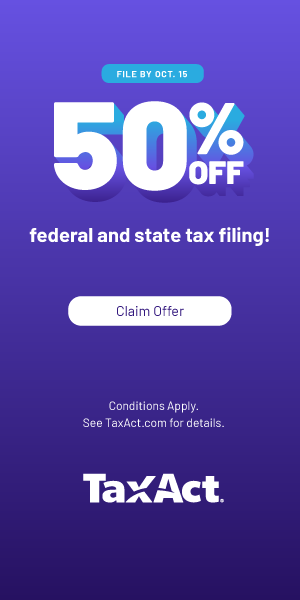One of the biggest obstacles to paying down student loans can be the interest charges that pile up each month. Before you can pay down even one dollar in principal, you have to take care of all your monthly interest charges.
Many federal student loans carry interest rates of 6 percent, 7 percent, or 8 percent, and interest charges on private loans can be even higher.
But just because the interest rates on your student loans are high doesn’t mean you’re stuck with them.
In the same way that homeowners routinely take advantage of changes in interest rates to refinance their mortgage at lower rates, a growing number of lenders now compete to refinance student loans.
What is student loan refinancing?
Student loan refinancing is the process of paying off your existing loans — federal or private — with a new loan from a private lender.
When the government issues student loans, interest rates are “one-size-fits-all.” Everyone taking out the same type of loan — undergraduates, graduate students, or parents — gets the same interest rate.
Rates offered by private lenders depend on the borrower’s creditworthiness and the interest rate environment. So if interest rates have been falling since you first took out your loans — or you’ve boosted your earnings and credit score — you could be eligible to lower the rates on your student loans.
How much can you save?
Because each lender has its own unique rules to determine if a borrower qualifies for a loan as well as the corresponding rates and terms, it’s important to request rates from multiple lenders.
The Credible.com marketplace’s integrations with credit bureaus and lenders allow you to see the rates you’re prequalified for with a range of vetted lenders in about two minutes. The marketplace also protects your credit score and doesn’t share your personal information unless you choose a specific option.
When does refinancing make sense?
Since an established earnings and credit history will help borrowers qualify for the best rates, refinancing often makes the most sense for individuals who have completed their degree and embarked on a career.
Here are three scenarios where refinancing may be a good option:
- You are comfortable with the monthly payments on your existing federal or private student loans and qualify for better rates from a private lender.
- You have variable-rate private student loans that you want to convert into fixed-rate loans.
- You want to lower the monthly payments on your private student loans by refinancing into a loan with a longer repayment term and potentially lower interest rate.
Qualifying for refinancing
While your credit does not have to be perfect, a few factors could disqualify you from refinancing.
The most common reason borrowers are turned down for refinancing is not due to their credit score. Instead, it’s a result of their debt-to-income ratio. Other issues that can derail an application to refinance include the lack of a degree, the school the borrower attended, and the size of the loan to be refinanced.
Because every lender has unique borrower requirements, it’s typical for borrowers who are eligible to refinance to be accepted by some lenders and rejected by others. A “no” from one lender doesn’t mean refinancing is not an option.
If you’re turned down for refinancing or aren’t offered rates that would make it worthwhile, keep in mind you can also apply with a cosigner.
By agreeing to take on the full responsibility for the loan if the primary borrower fails to repay it, a cosigner lends their good credit to the application. That can help borrowers get approved for refinancing or get approved at a lower rate. While parents, grandparents or other relatives are typical cosigner candidates, a cosigner can also be a spouse, a friend, or anyone who is at least 18 years old and a U.S. citizen or permanent resident.
Refinancing strategies
If you’re most interested in getting the lowest interest rate and maximizing your overall savings, you should aim to refinance into a loan with the shortest repayment term that you can afford to make the monthly payments.
If reducing the monthly payment on your federal student loans is more important to you, you may want to look at extending your payments in one of the government’s repayment plans.
Refinancing into a loan with a longer repayment term, however, can also be a smart option if you want to reduce your monthly payments. Because refinancing has the potential to lower your interest rate, it can then reduce or eliminate the additional costs normally associated with stretching out loan payments over a longer period.
Considerations before refinancing
If you have federal student loans, refinancing with a private lender means you will give up federal borrower benefits like access to income-driven repayment plans and the potential to qualify for loan forgiveness after 10, 20 or 25 years of payments.
Some private lenders provide loan forbearance or deferment to borrowers facing temporary economic hardships. They may even offer borrower protections that are similar to those provided with federal loans. Check your terms and conditions to know what’s available to you.
If you are uncertain about your future income or think you may qualify for Public Service Loan Forgiveness, refinancing federal student loans might not make sense.
However, many borrowers ultimately decide the savings they can achieve through refinancing is worth it. Borrowers who stretch out their payments without reducing their interest rate may pay considerably more in the long run. That’s particularly true if they don’t qualify for loan forgiveness.
Also keep in mind that refinancing shouldn’t be confused with a federal Direct Consolidation Loan, which does not reduce your effective interest rate. The interest rate on a federal Direct Consolidation Loan is the weighted average of the rates on the loans you are consolidating, rounded up to the nearest one-eighth of one percent.
Ready to check your rates? Visit Credible.com to qualify for a special $300 welcome bonus when you refinance.





